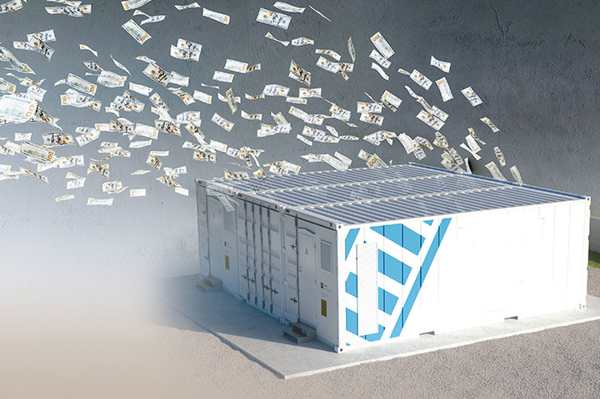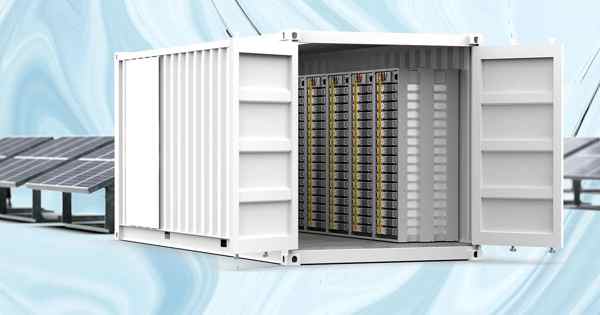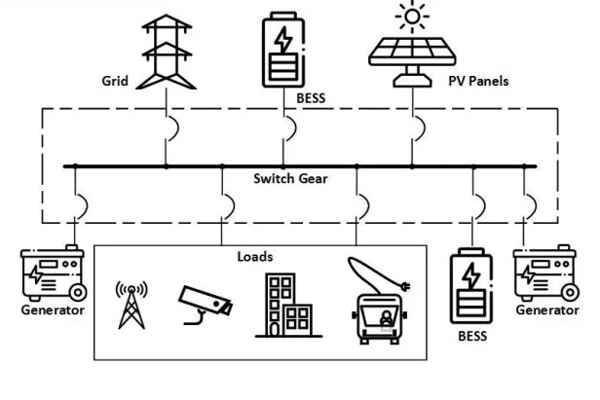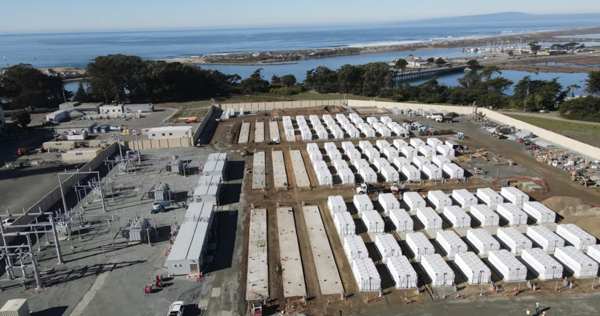Что означает Бесс в аккумуляторе?
Поскольку мир переходит к возобновляемой энергии и большей устойчивости сетки, Вы, вероятно, слышали аббревиатуру "Бесс" все больше и больше. Что означает Бесс в контексте батарей, И это просто еще одно название для большой батареи, или что -то большее? Понимание этого термина является ключом к навигации по миру современного хранения энергии.
В энергетическом секторе, Bess обозначает систему хранения энергии аккумулятора. Крайне важно понимать, что Бесс - это не просто батарея; это все, интегрированная система, которая включает модули батареи, жизненно важная система управления аккумуляторами (БМС), система преобразования мощности (ПК или инвертор), управление программным обеспечением, и все необходимые компоненты безопасности. Думайте о батареи как о топливном баке, Но Бесс - полная, Интеллектуальный двигатель готов к хранению и обеспечению питания по требованию.

В Гикс Солар, Мы специализируемся на предоставлении этих полных решений BESS. Когда клиент нуждается в хранении энергии, Мы не просто передаем им батарею; Мы разрабатываем комплексную систему, в которой все детали работают в гармонии, чтобы обеспечить безопасность, надежный, и эффективная сила. Давайте рассмотрим, что это влечет за собой.
Какие недостатки Бесс?
Система хранения энергии батареи предлагает невероятные преимущества, Но, как и любая крупная технология, Важно иметь сбалансированный взгляд и понимать его потенциальные недостатки, прежде чем делать инвестиции. Так, Что следует учитывать?
Основными недостатками Бесс являются ее Значительные авансовые капитальные затраты, его Конечная оперативная продолжительность жизни Поскольку все батареи разлагаются со временем, Потери эффективности обращения (Небольшой процент энергии теряется во время зарядки и разрядки), тот физическое пространство требуется для установки, и Экологические соображения Связано с производством и утилизацией в конце жизни. Однако, Современные технологии, Особенно системы с использованием литий -железного фосфата (ЛФП) батарейки, постоянно улучшается для решения этих проблем, повышение долгосрочной ценности и устойчивости.

Погрузитесь глубже: Реалистичный взгляд на проблемы Бесс
Давайте разберем эти потенциальные недостатки:
- Высокая авансовая стоимость: Бесс - значительная инвестиция. Стоимость батарей, высококачественный инвертор, Компоненты безопасности, и профессиональная установка добавляет.
- Наша перспектива: Хотя начальная стоимость является ключевым фактором, Мы рекомендуем клиентам взглянуть на выравнированную стоимость хранения (LCOS) и долгосрочное значение. Бесс может резко сократить счета за электроэнергию (Особенно в сочетании с солнечной), обеспечить бесценную мощность резервного копирования, и хеджирование от роста цен на энергоносители. Стимулы, такие как федеральный инвестиционный налоговый кредит (ИТЦ) в США. также значительно снизить чистую стоимость.
- Конечная продолжительность жизни & Деградация: Компонент батареи Bess не длится вечно. Он теряет небольшое количество пропускной способности каждый год и с каждым циклом заряда/сброса.
- Наша перспектива: Вот где выбор правильной технологии имеет решающее значение. Мы расставляем приоритеты батареи LFP, которые имеют очень длительный срок службы (Подробнее об этом следующем), и мы разрабатываем системы, чтобы они не были подчеркнуты излишне, максимизируя их срок службы. А 10+ Год жизни в настоящее время является стандартным для качественного LFP Bess.
- Потери эффективности обращения: Ты не уходишь 100% энергии, которую вы вкладываете. Некоторые теряются как жар.
- Наша перспектива: Современные литий-ионные бесс очень эффективны, с эффективностью обратного пути, как правило, между 85% и 95%. Хотя это и не идеально, Это намного превосходит более старые технологии хранения. Мы используем высокоэффективные инверторы и компоненты, чтобы минимизировать эти потери.
- Физический след: Бесс -подразделения требуют выделенного физического пространства, что может быть рассмотрено для небольших домов или предприятий.
- Наша перспектива: Современные дизайны, такие как настенные батареи и компактные системы крепления стойки, очень эффективны.. Мы работаем с клиентами, чтобы найти лучшее место, которое безопасно, соответствие, и минимально навязчиво.
- Экологические проблемы/утилизация: Производство батареи имеет экологический след, и утилизация литий-ионных батарей-это развивающаяся отрасль.
- Наша перспектива: Мы предпочитаем химию LFP, который избегает использования кобальта, Минерал со значительными этическими и экологическими проблемами. Мы также поддерживаем и оставаемся в курсе растущей индустрии утилизации батареи, поощрение ответственного управления в конце жизни.
Какова срок службы батареи Бесс?
При рассмотрении Бесс, Его продолжительность жизни является критическим фактором при определении его общей стоимости. Сколько лет надежного обслуживания вы можете ожидать от батарей в одной из этих передовых систем?
Компонент батареи в современной Бессе, который обычно использует ЛФП (Литий-железо-фосфат) химия, предназначен для длительной эксплуатационной жизни. Как правило, можно ожидать Календарь Жизнь 10 к 20 годы и велосипедная жизнь в диапазоне от 3,000 до конца 6,000 Циклы полной зарядки. Гарантировать эту производительность, Большинство авторитетных производителей BESS предлагают 10-Годовая гарантия что гарантирует, что батарея сохранит значительную часть (НАПРИМЕР., 70%) его первоначальной мощности после десятилетия обслуживания.

Погрузитесь глубже: Ключи к долговечности Бесс
Несколько факторов способствуют долгой жизни хорошо продуманной Бесс:
- Превосходная химия (ЛФП): Как мы обсуждали, LFP является химически стабильным и надежным, чем другие общие литий-ионные типы, такие как NMC. Это делает его идеальным для ежедневного велосипеда, необходимого в приложении для хранения солнечной энергии. Аккумулятор, который проезжает один раз в день для 15 лет будут проходить 5,475 циклы, число, которые высококачественные батареи LFP созданы для обработки.
- Интеллектуальная BMS: Система управления аккумуляторами жизненно важна. Это действует как опекун, предотвращение работы батареи за пределами его безопасных пределов (температура, Напряжение, текущий) и обеспечение сбалансирована все его внутренние клетки. Эта защита резко уменьшает напряжение и продлевает срок службы батареи.
- Правильный размер системы: Система, которая имеет соответствующий размер для нагрузки дома или бизнеса, означает, что батарея не постоянно подталкивается до абсолютных пределов (максимальная скорость сброса или 100% глубина разряда), который уменьшает износ со временем.
- Тепловое управление: Корпус Bess и его система охлаждения (пассивный или активный) предназначены для сохранения батарей в пределах их идеального диапазона рабочей температуры. Это особенно важно в теплом климате, как Сингапур, Поскольку чрезмерная жара является основным врагом долговечности аккумулятора.
GYCX Solar Story: "Мы всегда говорим нашим клиентам, что Bess-это долгосрочный энергетический актив. Когда мы устанавливаем систему с батареями LFP и 10-летней гарантией, Мы предоставляем им десятилетие или более предсказуемой экономии энергии и безопасности, что делает первоначальные инвестиции намного яснее."
В чем разница между UPS и Bess?
Вы можете услышать «UPS" и «Бесс" И думайте, что это всего лишь два способа сказать «резервную силу." В то время как обе системы используют батареи для обеспечения питания, когда сетка спускается, их основная цель, шкала, и продолжительность очень разные.
А UPS (Бесперебойный источник питания) обычно предназначен для обеспечения короткий срок, чистая сила (Обычно в течение нескольких минут) Чтобы получить чувствительную электронику, такую как компьютеры и серверы, изящно выключаться во время отключения.. А БЕСС (Аккумуляторная система хранения энергии), с другой стороны, гораздо большая система, предназначенная для Длительное управление энергией, способен питать основные схемы или даже целый дом в течение многих часов или дней, и разумно управлять энергией из таких источников, как солнечная батарея.

Погрузитесь глубже: Сказка о двух батарейных системах
Давайте сравним их лицом к лицу:
| Особенность | Бесперебойный источник питания (UPS) | Аккумуляторная система хранения энергии (БЕСС) |
|---|---|---|
| Основная цель | Защитить электронику от глюков; разрешить безопасное отключение. | Обеспечить длительную мощность; Хранить солнечную энергию; управлять затратами на энергию. |
| Время выполнения | Минуты (обычно 5-30 мин). | Часов до нескольких дней. |
| Емкость | Измеряется в VA или Watts (НАПРИМЕР., 1500Вирджиния / 900Вт). Низкий кВтч. | Измеряется в кВтч (НАПРИМЕР., 10кВтч, 20кВтч, или гораздо больше). |
| Размер | Маленький, настольный или стойчный блок. | Большое прибор, Настенный блок, шкаф, или даже размер доставки контейнера. |
| Интеграция | Простое подключаемое устройство. | Профессионально установлен и интегрирован в электрическую систему здания. |
| Технологии | Часто использует запечатанные свинцовые батареи. | Почти всегда использует усовершенствованный литий-ион (ЛФП) батарейки. |
| Основное использование | Защита ИТ -оборудования (компьютеры, серверы, сетевое снаряжение). | ВСЕГО ДОМА, Солнечное самосознание, вне сети жизни, пиковое бритье. |
Суммируя, UPS - это как плот жизни для ваших данных, давая вам достаточно времени, чтобы добраться до безопасности. Бесс похож на ваш собственный остров, позволяя вам жить комфортно и самодостаточно в течение длительного периода времени. В GYCX Solar, Мы сосредоточены на предоставлении этих «частных островов" Bess Solutions для истинной энергетической устойчивости.
Что является крупнейшим аккумуляторным хранением в мире?
Мы говорили о Бесс для домов и предприятий, Но насколько большой может получить эта технология? Чтобы понять его полный потенциал, Понятно взглянуть на масштабные проекты масштабирования сетки, которые трансформируют энергетические сетки по всему миру.
Начиная с раннего и среднего 2025, один из Крупнейшие в мире системы хранения энергии оперативной батареи остаются наставником для хранения энергии Moss Landing в округе Монтерей, Калифорния. Это массивное Бесс, управляется Vistra Energy, имеет эксплуатационные возможности 750 мегаватт (МВт) и 3,000 Мегаватт-часы (МВтч). Проекты этого колоссального масштаба демонстрируют невероятную способность технологии BESS для поддержки целых сетей и интеграции огромных возобновляемых энергии.

Погрузитесь глубже: Масштаб хранения энергии на уровне сетки
Что делает 750 МВт / 3,000 MWH Бесс, как МОСС Лендинг, на самом деле?
- Масштаб в перспективе:
- Власть (МВт): 750 Мегаватт достаточно мгновенной энергии, чтобы примерно 560,000 дома.
- Энергия (МВтч): 3,000 Мегаватт-часа-это общее количество энергии, которую он может хранить. (Помнить, 1 MWH = 1,000 кВтч). Типичный дом может использовать 25-30 кВтч в день, так 3,000 MWH эквивалентна ежедневному использованию электричества 100,000 дома. Этот Bess может сбросить свой полный 750 МВт власти для 4 часы подряд (750 MW x 4H = 3,000 МВтч).
- Цель сетки Бесс:
- Хранение возобновляемых источников энергии: Эти гигантские батареи хранят избыточную солнечную энергию и энергию ветра, генерируемую в середине дня или ветреные ночи, а затем подайте его обратно в сетку во время пиковых периодов спроса..
- Стабильность сетки: Они могут ответить за миллисекунд, чтобы стабилизировать частоту и напряжение сетки, Предотвращение отключений и улучшение качества электроэнергии.
- Заменить "Пикер" Растения: Они все чаще заменяют неэффективную и загрязняющую природную газ »пикер" Растения, которые традиционно были запущены, чтобы удовлетворить высокий спрос всего за несколько часов в день.
- Технология: Эти объекты состоят из сотен больших, Корпуса размером с контейнер, каждый упакован в стойки с модулями батареи и связанные с ним BMS, управление температурным режимом, и системы безопасности. Эти контейнеры подключены к крупномасштабным системам преобразования питания (ПКС) а затем к высоковольтной силовой сетке.
Невероятный масштаб проектов, таких как Moss Landing, демонстрирует, что та же фундаментальная технология BESS, которую мы используем в Gycx Solar для одного дома или бизнеса, является устойчивой, надежный, и достаточно масштабируемый, чтобы питать целые города. Это лежит в основе глобального перехода к будущему чистой энергии.
Так, Что означает Бесс? Это означает полный, интеллектуальная система, которая обеспечивает контроль над вашей энергией. В то время как существуют такие соображения, как стоимость и срок службы, Современная технология LFP BESS предлагает безопасность, долгоиграющий, и мощное решение. От единого настенного устройства в вашем доме до массивных сетчатых средств, БЕСС1. является ключом к раскрытию полного потенциала возобновляемой энергии и обеспечения устойчивого источника питания.
Если вы заинтересованы в том, как Bess может вписаться в ваши энергетические планы, Наша команда в Gycx Solar имеет опыт разработки решения для вас. Свяжитесь с нами сегодня, чтобы узнать больше о наших продуктах для хранения энергии батареи.
Понять концепцию BESS, чтобы вы могли лучше сравнивать и понять концепции данных, связанных с батареей. Это поможет вам выбрать продукт, который лучше всего соответствует вашим потребностям в нашей компании. ↩
